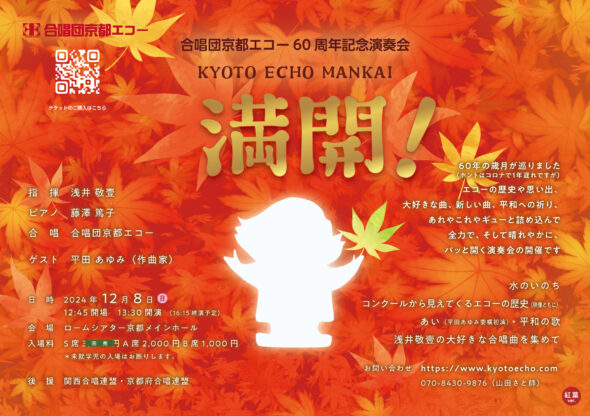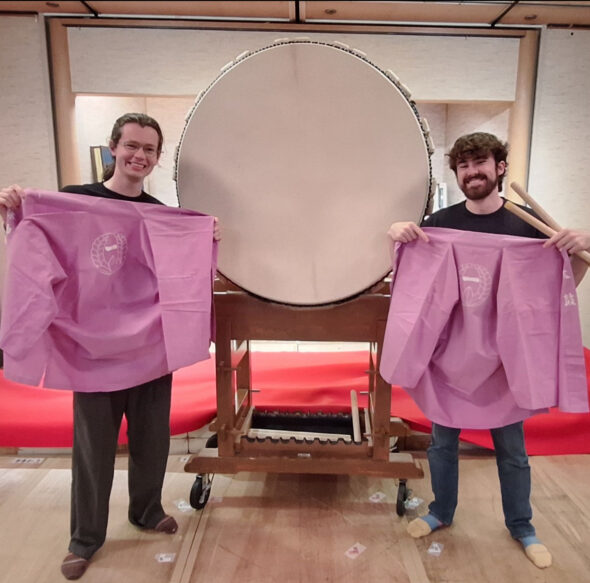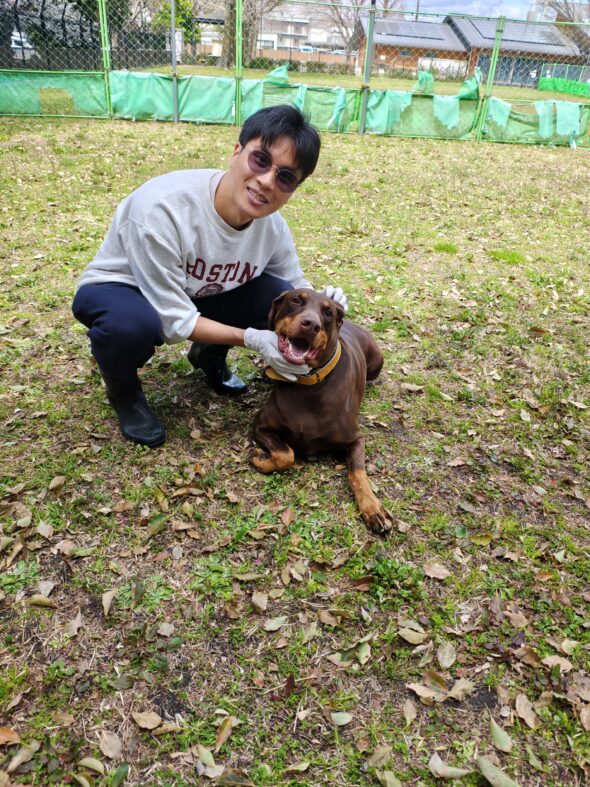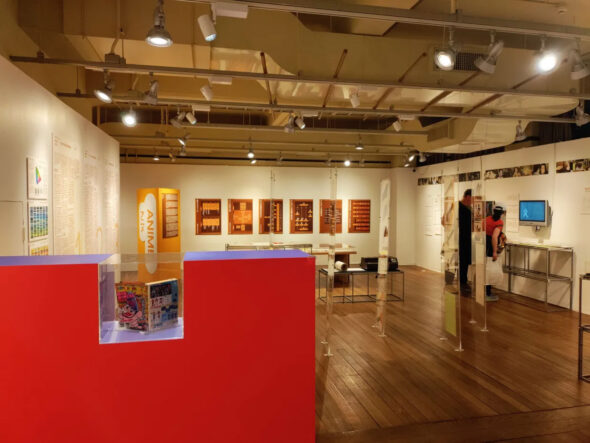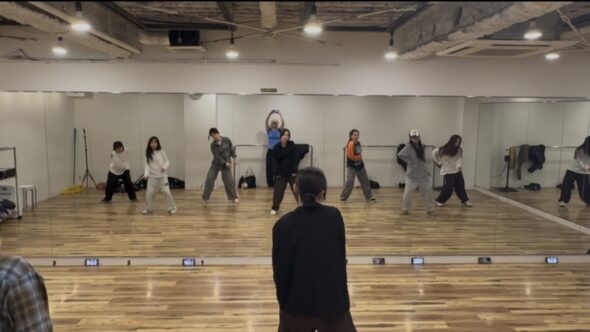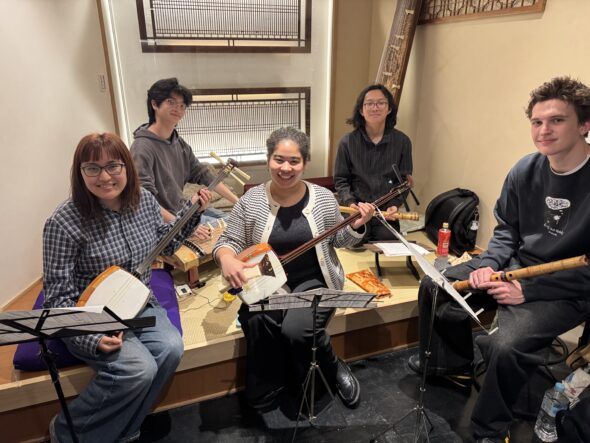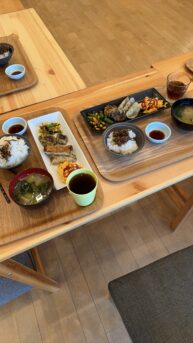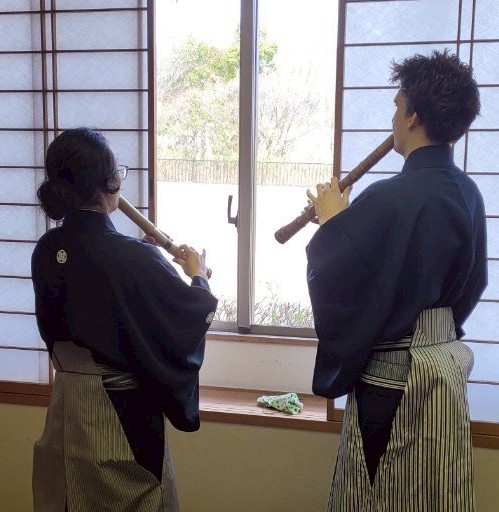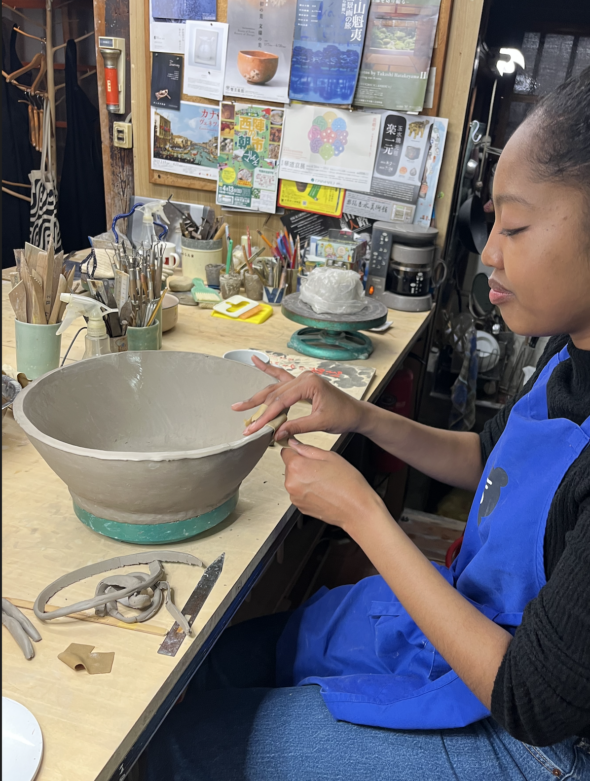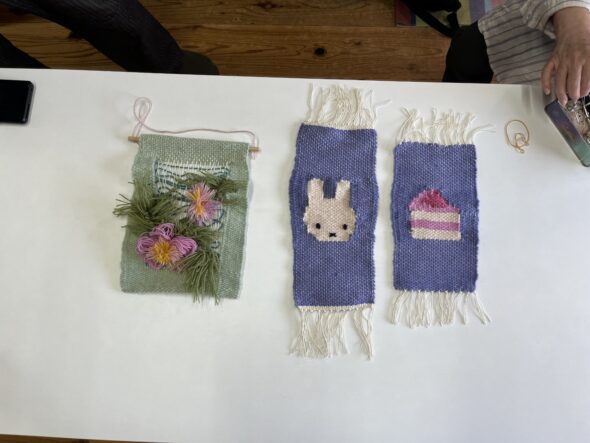
For my CIP, I did weaving with Kawasaki Haruo and Kawasaki Yuri, a couple who have been weaving for most of their lives. I learned how to use a loom to make textiles out of wool and silk.
I think my CIP was one of the most rewarding things from my time at KCJS. I was able to be creative and get help from very skilled weavers while also having nice conversation with my teachers and other students during tea time.
I would recommend anyone to choose this CIP as absolutely no experience is required. You can tailor the experience to fit your needs. If you are more advanced, you can learn how to set up the loom and ask about certain techniques. Kawasaki-sensei has many books of his teachers work and books he was published in with other artists works as well.
I made a silk scarf and 3 tapestries, but I could have made more if I started with a more simple project at first.
If you choose this CIP, I would recommend you think about how much time you have in the semester. There is the ability to go 2 times a week for up to 6 hours each class. When I first did this, I got too tired and had to scale back. Do not be afraid to say no because you are not required to do this. But if you are really interested in weaving this is a great opportunity to go all in. Note that there is a fee, but half of it should be covered by KCJS.

